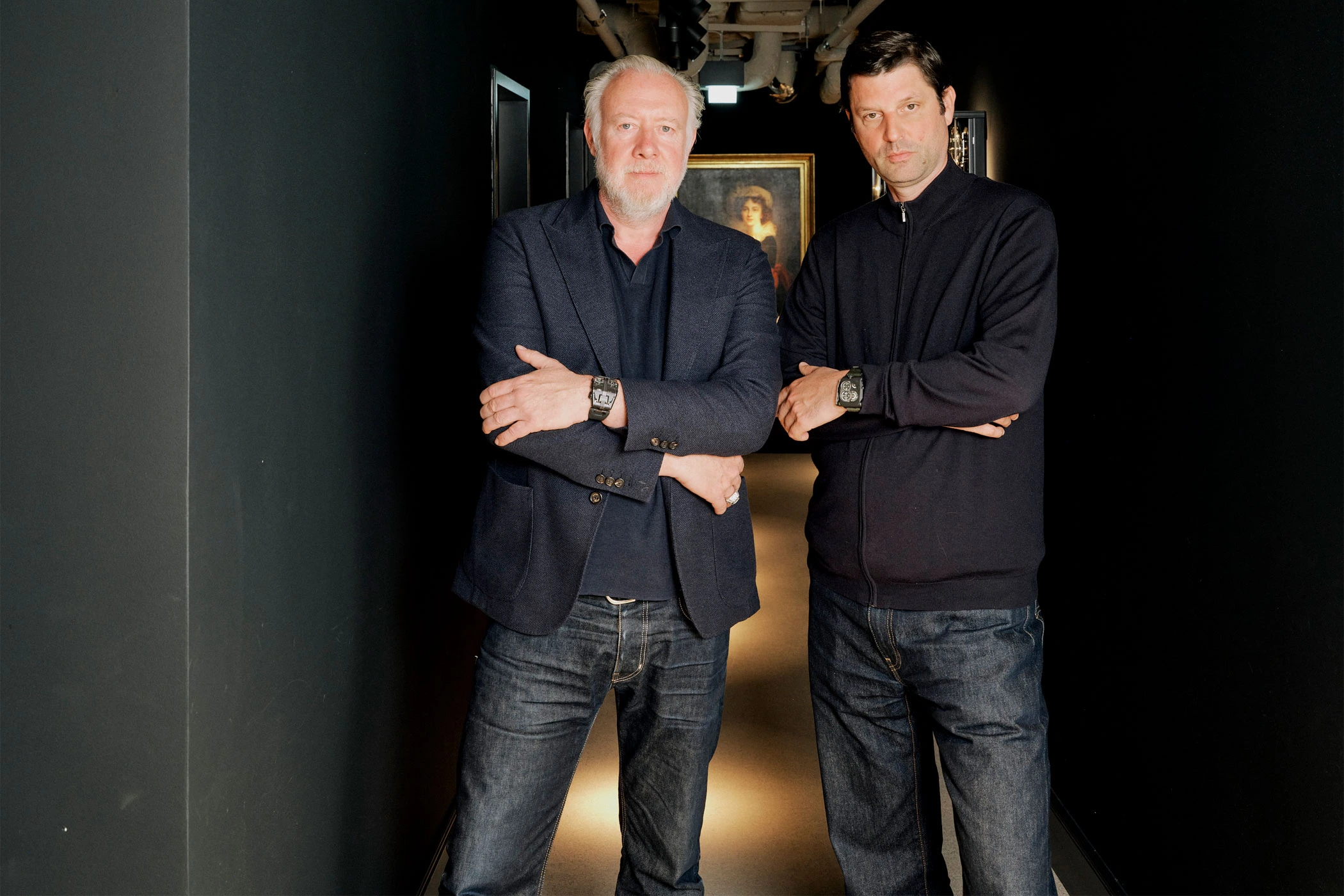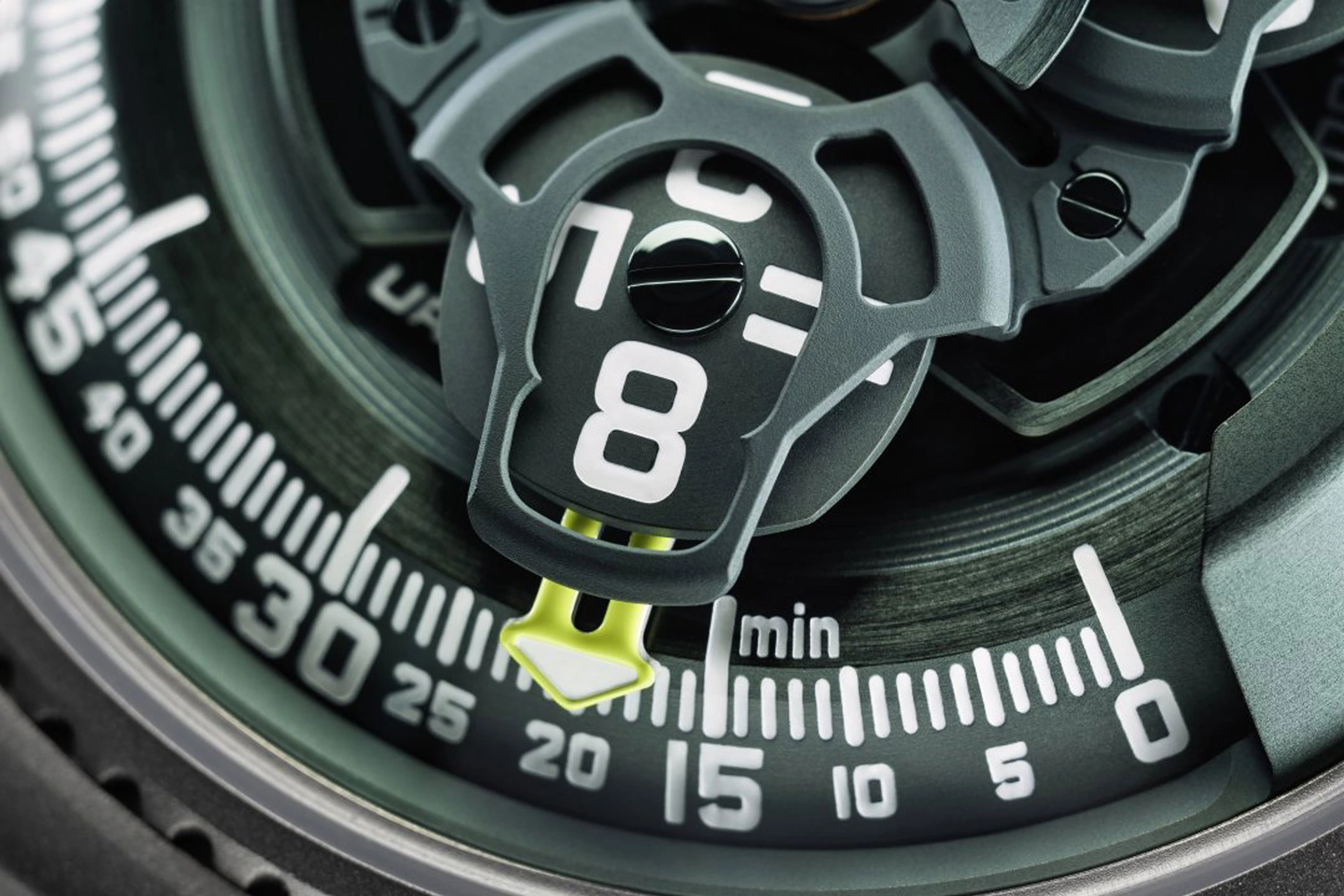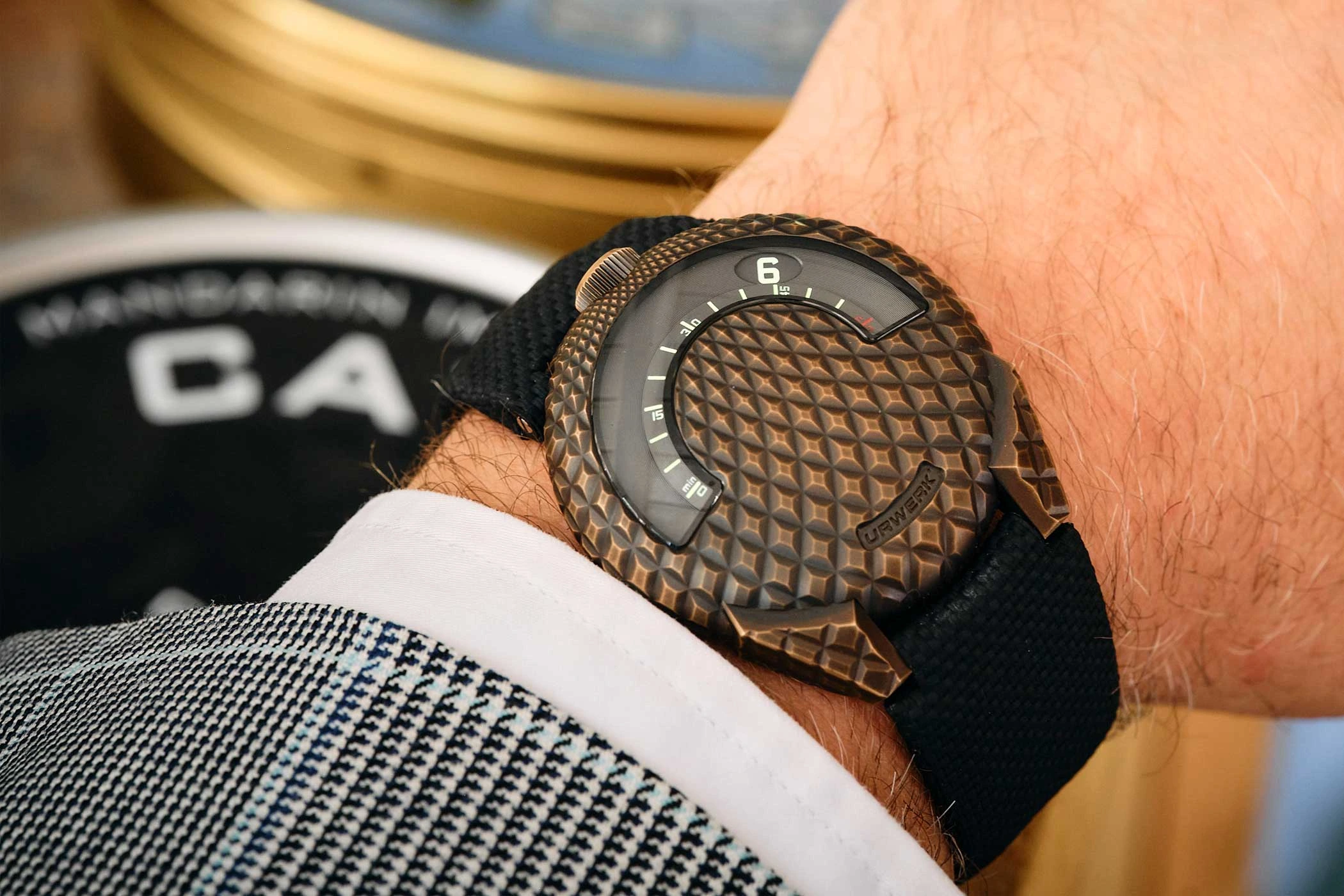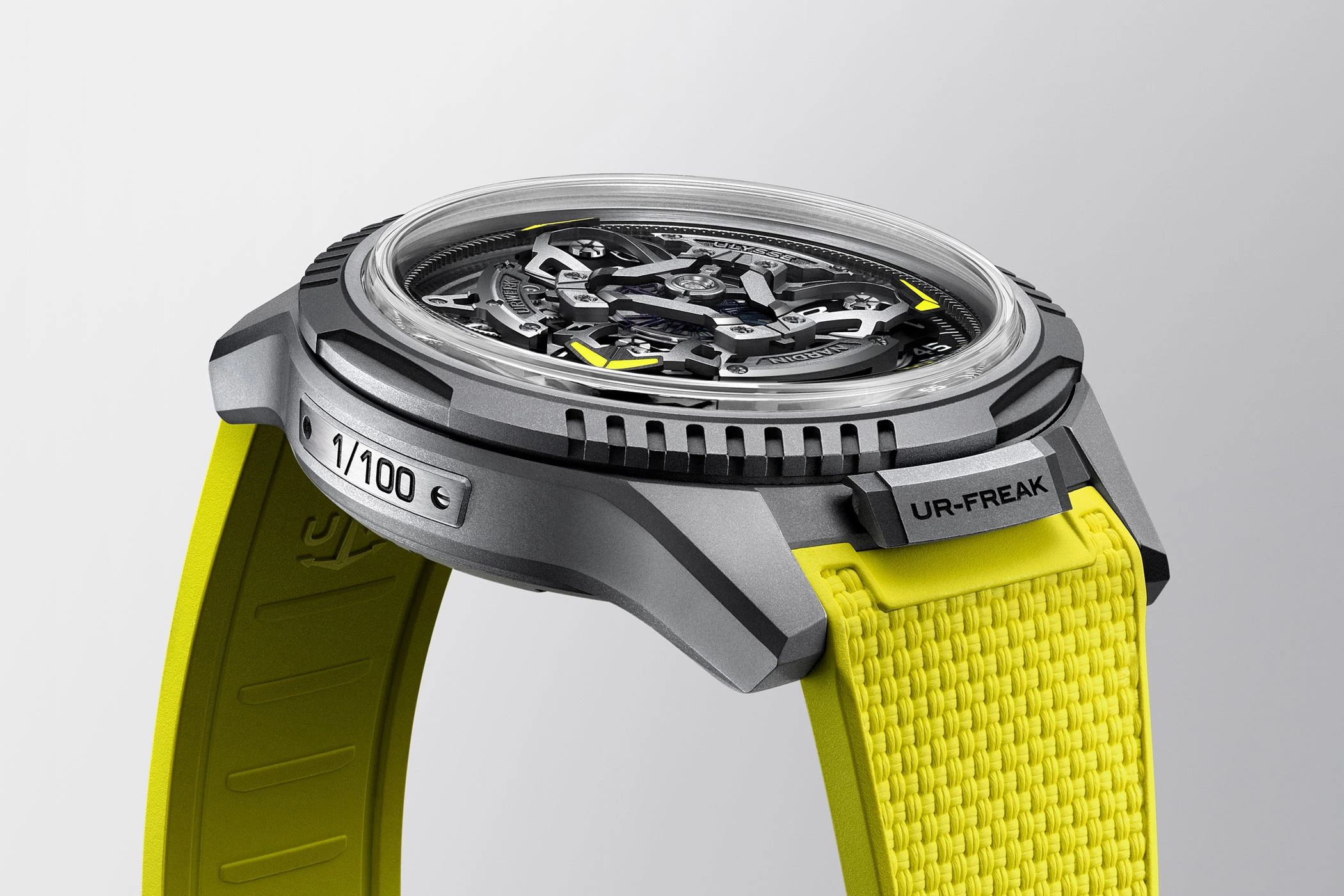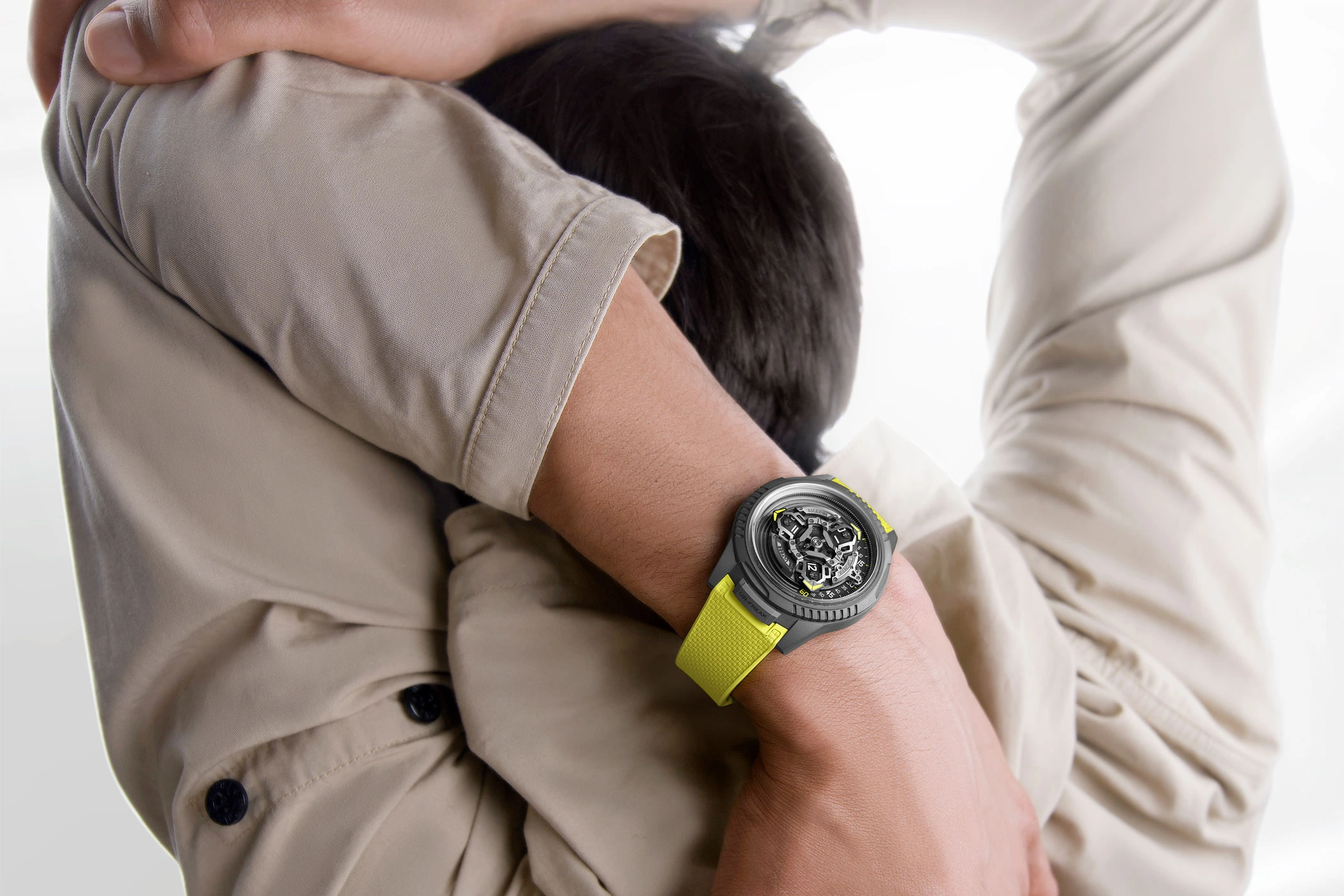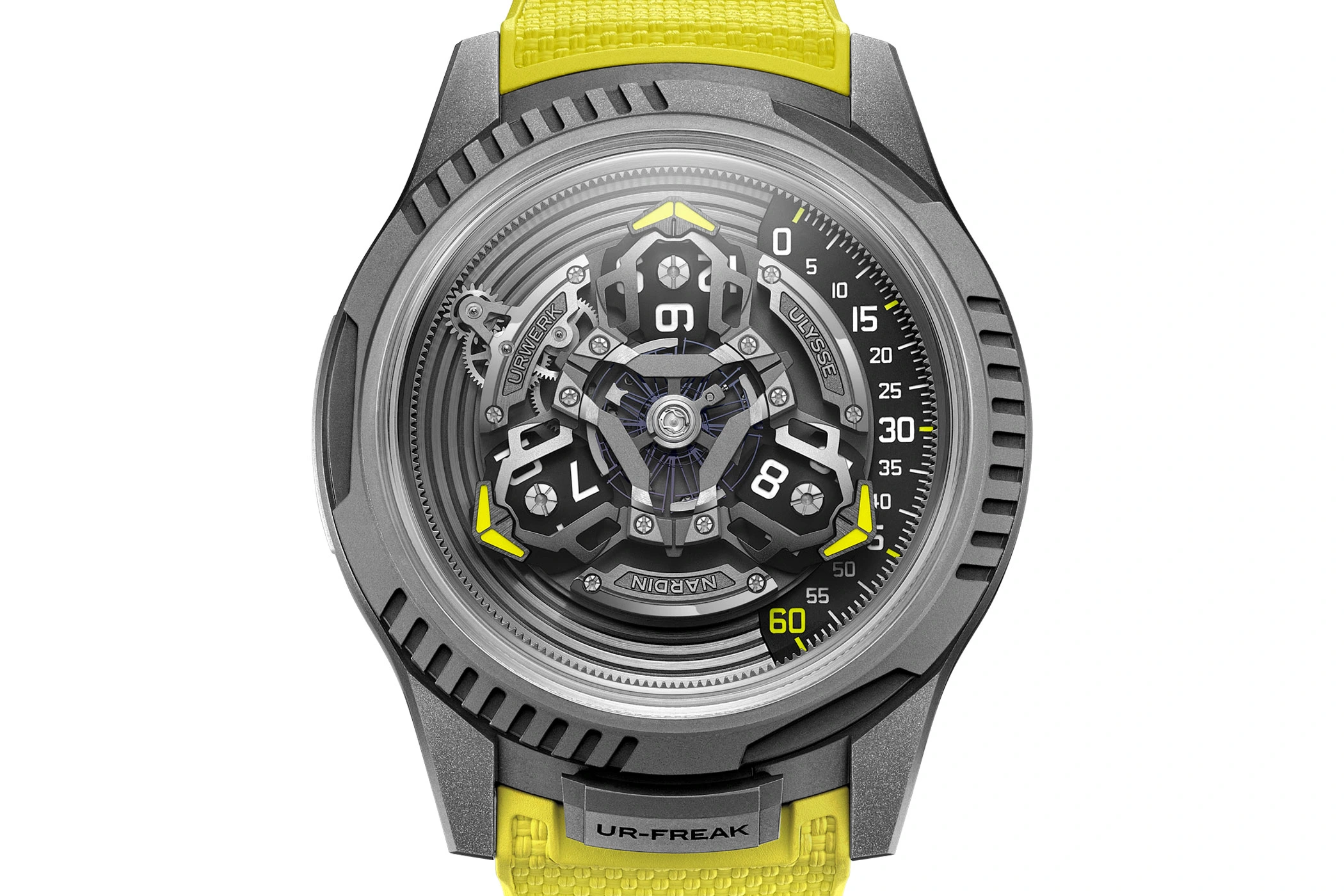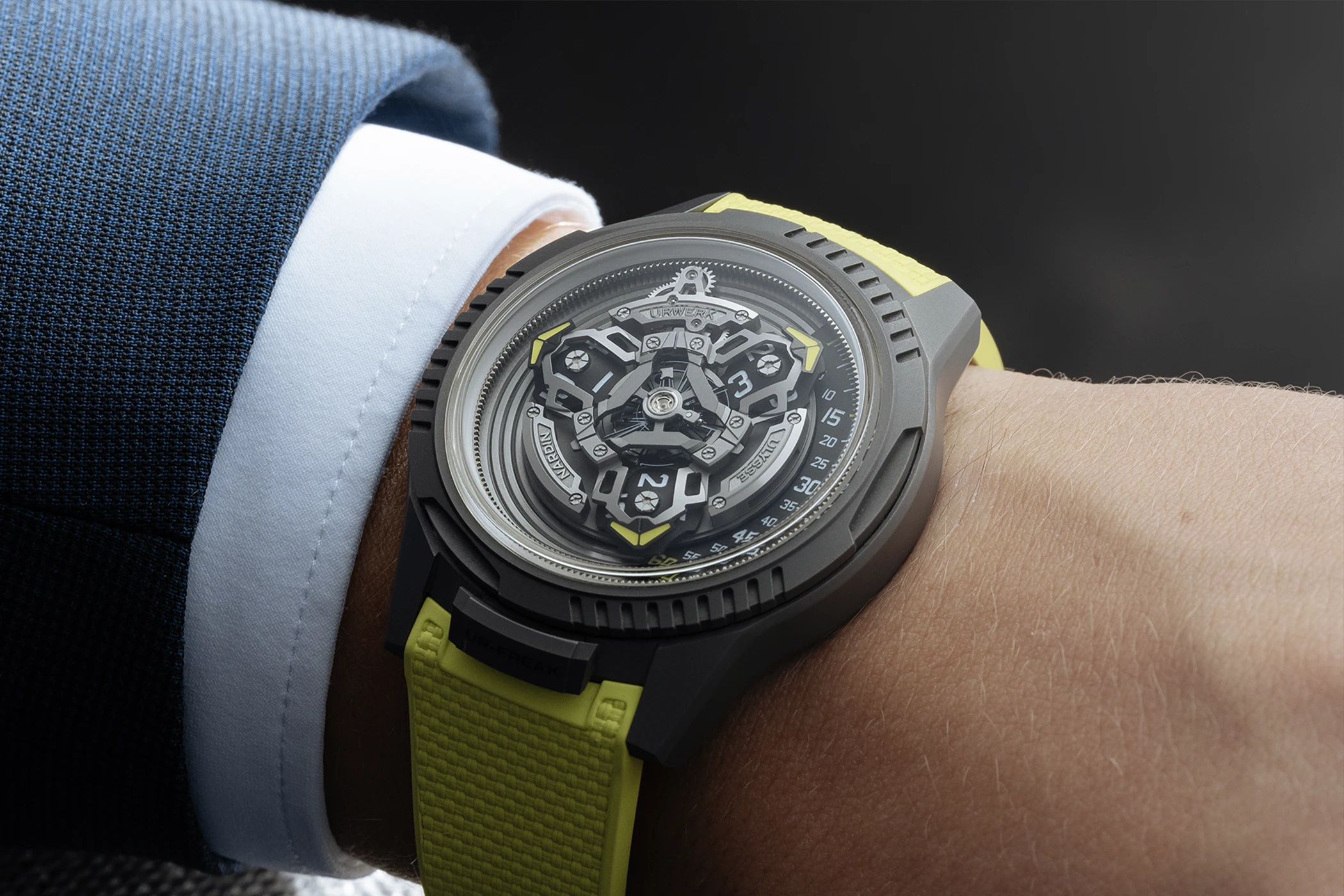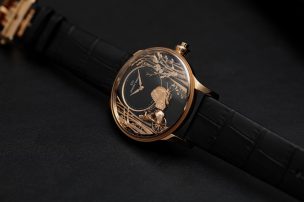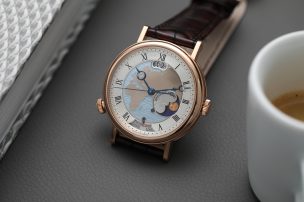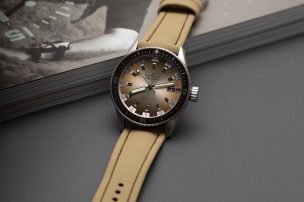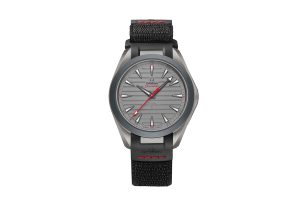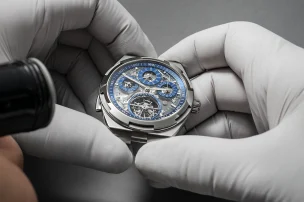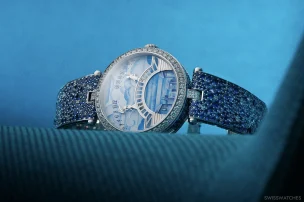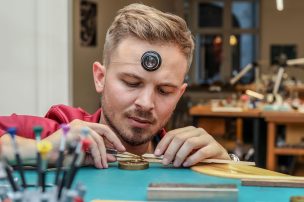

Ulysse Nardin x Urwerk = Ur-Freak: Two Free Spirits Join Forces
Ulysse Nardin and Urwerk both belong to the club of brands that, over 20 years ago, challenged traditional watchmaking – one with the Freak, the other with the UR-101. Now they present the Ur-Freak together. In an interview with Swisswatches Magazine, Jean-Christophe Sabatier of Ulysse Nardin and Martin Frei of Urwerk explain how the fusion of the two brand concepts was achieved.
The Ur-Freak by Ulysse Nardin x Urwerk is a limited edition of 100 pieces. Within it, two concepts of time merge – concepts that share much, yet are also worlds apart. It is therefore worth taking a look at the origins and vision of the two brands. But first, let’s consider a crucial similarity: an uncompromising break with convention without denying or questioning what has been tried and tested.
Freak – Ulysse Nardin chooses the perfect name
‘What the Freak achieved was to free people from the notion of what a watch has to be.’ This is how the creator of this extraordinary timepiece, Ludwig Oechslin, succinctly puts it. In 2001, he devised the radically innovative concept of the Freak, one of the most technologically influential watches of the 21st century. It is a groundbreaking watch packed with cutting-edge technology and avant-garde design: no dial, no hands, and no crown.
Instead, the watch relies on a patented carousel mechanism in which the entire movement rotates. It is also designed in such a way that energy is transmitted directly from the mainspring to the time display – without classic hands or gears.
The movement’s upper bridge rotates once per hour on its own axis and carries the entire escapement system. It serves as the minute hand. A disc beneath it rotates once every 12 hours and functions as the hour hand.
2001: The Freak stirs up the watch world
First presented to an astonished public at Baselworld in 2001, this unrestrained leap continues to resonate today and has inspired many watchmakers to create truly original designs. Speaking of escapements: Ulysse Nardin was the first manufacturer to use silicon components for this assembly, making it more precise, lighter, and far less susceptible to magnetism.
‘You cannot overestimate the Freak’s influence on Swiss watchmaking,’ says Jean-Christophe Sabatier, Chief Product Officer of the manufacture founded in 1846. ‘It is a refreshing expression of who we are. It is a highly technical watch, yet with intense emotional value,’ Sabatier continues.
Numerous successor models have since been released, each one surprising us anew and revealing the creative potential of the Freak. And the courage of its creators to break supposedly unbreakable rules – even their own. In 2019, for example, the Freak X was released, equipped with a crown. For conventional watches, this is the most normal thing in the world, but for the Freak, it was a minor revolution.
The Freak X is a good example of the skilful balance between tradition and a kind of ‘light disruption’. For Ulysse Nardin has no intention whatsoever of questioning or declaring obsolete the centuries-old heritage of haute horlogerie and its evolutionary developments. Rather, they free themselves from fixed ways of thinking and expand the boundaries of traditional craftsmanship. With an emphasis on craftsmanship. For the Freak is not merely about striking design. It certainly shows it off – but not for appearance’s sake. Instead, it is an expression of the demanding, differently conceived technology behind it.
And Ulysse Nardin did not stop with the first Freak. They used this ticking outsider as a laboratory on the wrist, a place where forms, materials, and technologies could be explored and realised. The result: more than 20 patents have been filed for this timepiece since 2001, with only a few thousand examples manufactured since its introduction.
Urwerk: Irrevent, rebellious, eccentric
This is one way the Swiss watch brand Urwerk describes itself. Founded in 1997 by Felix Baumgartner and Martin Frei, the name alone sets the mental carousel in motion. The sight of the watches – of which only 150 to 200 pieces are produced each year – gives it even more momentum.
Technically speaking, however, unlike the Freak, these timepieces have nothing to do with a carousel. Instead, they feature wandering hours and satellites. In doing so, the creators delve deep into the history of watchmaking and transform it into the here and now of their own time cosmos. This is a core element of Urwerk’s philosophy.
‘There are so many exciting and inspiring insights to be gained when you delve deep into the history of timekeeping,’ emphasises Martin Frei.
One of these is based on the complication of floating hours, which has been around for centuries and forms the basis of all the brand’s watches. The floating hours display the hours like satellites orbiting a centre and moving along a minute scale. Urwerk combines this with avant-garde, futuristic design.
Urwerk – a cosmos without boundaries
‘Are there any boundaries?’ This was the question Felix Baumgartner and Martin Frei raised in their conversation with Swisswatches Magazine on the occasion of Urwerk’s launch at the jeweller Wempe.
In their response, they spoke, among other things, about the god of precision, a chicken grill in Dubai, the Tamagotchi craze of the 1990s, a hand-crank, of course the wandering hours – and even one or two shocks.
To cut a long story short: no, boundaries do not matter to either of them. Not even those imposed by the conventions of venerable Swiss watchmaking. ‘It was, of course, a shock in 1997 to come up with a watch that looked like a UFO, and with a brand that didn’t have a French name,’ recalls Felix Baumgartner of the early days with the UR-101 and UR-102 models. ‘I come from an environment where creativity knows no bounds. Free from the constraints of traditional watchmaking, I can draw unlimited inspiration from my cultural heritage.’
Ulysse Nardin x Urwerk = Ur-Freak
The disruptive Freak from Ulysse Nardin plus Urwerk’s avant-garde watch architecture – it is obvious that such an arrangement would not result in a conventional watch. While this is Ulysse Nardin’s first collaboration with another watch brand, for Urwerk it is part of their identity.
And so the crownless concept of the original Freak and Urwerk’s satellite display system come together in the Ur-Freak. But it is far from being a simple fifty-fifty blend of the two brands, as becomes particularly evident in its inner workings. The Ur-Freak features a three-hour carousel, unlike the one-hour carousel of the classic Ulysse Nardin Freak, and is equipped, among other things, with the patented DIAMonSil material for the escapement.
These are diamond-coated silicon components, designed to ensure the escapement can withstand up to 185 million impacts per year, guaranteeing both precision and longevity. Added to this is Ulysse Nardin’s patented Grinder system – an exceptionally efficient, low-friction automatic winding mechanism that is activated even by the tiniest movements of the wearer, converting them into kinetic energy.
As the name suggests, the complex three-hour carousel does not rotate once in an hour, but completes a full 360-degree rotation over three hours. The reduced rotational speed results in higher energy efficiency and improved stability. The movement is based on the manufacture calibre UN-241, a completely integrated, newly developed mechanism that combines the carousel with Urwerk’s patented satellite display. As with all Freak models, the movement itself serves as the minute hand – albeit now with a different gearing ratio. As if that were not extraordinary enough, the Ur-Freak combines Ulysse Nardin’s Freak technology with Urwerk’s wandering hour display. This creates a mechanical fusion of the two brands’ independent watchmaking visions, which has never been seen before.
So-called satellites rotate with four jumping, curved hour discs on a central cross. The ‘active’ satellite indicates the current hour and moves in an arc across a minute scale on the right-hand side of the watch. Once the current hour, connected to the rotating carousel, has completed its journey along the 60-minute scale, the hour disc changes. This allows the time to be read as if on a linear scale, even though a rotating mechanism lies at its heart. This fusion is made possible by the new, fully integrated automatic manufacture calibre UN-241, offering a generous 90-hour power reserve and wound by hand via the caseback. The Ur-Freak is set using the rotating bezel.
The elaborately decorated UN-241 is protected by a 44-millimetre titanium case with a sandblasted finish and distinctive notches. Neon yellow accents with Super-LumiNova coating, along with a colour-coordinated strap, provide striking highlights.
Jean-Christophe Sabatier (Ulysse Nardin) and Martin Frei (Urwerk) in conversation with Swisswatches Magazine
On the sidelines of the Geneva Watch Days 2025 in early September, we met with Martin Frei and Jean-Christophe Sabatier for an exclusive preview of the Ur-Freak and gained fascinating insights.
How did the collaboration between Ulysse Nardin and Urwerk come about?
Jean-Christophe Sabatier: When Patrick Pruniaux approached me about wanting to collaborate with another brand, I told him it absolutely had to be an independent brand – especially if it was going to involve the Freak.
And somehow it made perfect sense that it was Urwerk. About 20 years ago, a kind of club of brands emerged, reinterpreting traditional watchmaking, taking risks, and genuinely challenging and changing the watch industry. Ulysse Nardin and Urwerk were part of that.
Martin Frei: Felix Baumgartner then met with Patrick Pruniaux in Geneva. When he came back, he told me they had discussed the Freak and realised there were significant parallels with our world of watchmaking. The Freak was released in 2001, just a few years after we first realised our timekeeping idea with the UR-101.
We are two very different brands, but we share common values and visions. So we sat down again and considered whether a collaboration was possible. We concluded: Yes! And that’s how it all started.
Both brands are very distinctive, each with its own core identity. How does that work together?
Martin Frei: Above all, it’s about the idea of mechanical complications and the approach to them. The Freak concept is extremely creative and still feels fresh. There are so many cool features, like winding the watch via the caseback and setting the time through the bezel. It’s so different from other mechanical watches.
It’s very similar for us. We also think about functions differently than conventional watch brands. So, while Urwerk and Ulysse Nardin are very independent brands, they share a similar DNA in their uniquely creative approach to designing mechanical functionality.
Jean-Christophe Sabatier: Patrick and I loved the idea of working with Urwerk. It’s a brand with a lot of integrity that always follows its own path. I admire that greatly. And it reminds me of the Freak, which has always been a bit of a peculiar creature in the ring – and still is.
And, of course, as Martin says, there are similarities in their unconventional approach and the creation of technical concepts. The pursuit of modernity, innovation, and a distinctive design identity applies equally to Urwerk and Ulysse Nardin.
Martin Frei: I completely agree. And I learned so much while working with the Freak – for example, how a designer’s idea became reality thanks to Dr Ludwig Oechslin, this brilliant and effortlessly cool watchmaker.
At Urwerk, we have a very similar setup. I’m the designer and artist on one side, and Felix the watchmaker on the other. Essentially, we’re constantly playing a kind of idea ping-pong with each other, and that’s how we create our watches.
A similar creative ping-pong happened between Ulysse Nardin and Urwerk, resulting in a new reality – and ultimately a shared watch.
At the start of a collaboration like this, you never know where it will lead. You are always surprised. And that’s the best part.
But didn’t you have to make compromises?
Martin Frei: Yes, compromises have to be made at various levels. This means that there are certain restrictions that do not exist when you design a watch on your own. In the case of the Freak, this mainly concerned its complex mechanics, which of course had to be retained.
So we asked ourselves how we could deal with this, how we could combine it with our ideas. We learned a great deal while searching for the answer. And in the end, our two concepts merged perfectly.
How long did the entire process take, from the initial idea to the finished watch?
Jean-Christophe Sabatier: Three years. During this collaboration, the focus was primarily on technical aspects rather than colour codes or logos. Instead, we developed a completely new hand-wound calibre.
The UN-241 consists of 263 components, 157 of which were developed specifically for the Ur-Freak. This makes it a completely new three-dimensional movement architecture, allowing us to combine Urwerk’s satellite display and wandering hours principle with the Freak concept. I particularly enjoyed the challenge of redesigning the carousel architecture to accommodate a significantly larger oscillator in the centre and Urwerk’s satellites. This eliminates the concentric target effect, giving the watch a balanced yet powerful appearance.
Martin Frei: There is an asymmetrical element. It creates a counterbalance to the centred oscillator and makes the design even more exciting. After all, symmetry can also be boring.
How much Urwerk and how much Ulysse Nardin is in the Ur-Freak?
Martin Frei: That’s not an easy question to answer. I like to compare it to us humans. When you look at your own child, you ask yourself: how much of me and how much of the other parent is in them? But it’s the combination of both that has created something new. My answer to your question always depends on the moment, though.
Jean-Christophe Sabatier: Exactly. Sometimes you see the amount of work that went into the Ur-Freak, and sometimes you just see the fantastic result: the fusion of two extraordinary watch concepts into something completely new and surprising.
I’ll let you in on a secret. When I saw the first picture of the Ur-Freak, I thought: what a pleasant and modern watch. That surprised me, because the design is far from conventional. Nevertheless, it gives you a good feeling when you look at it. I would therefore be delighted to see further collaborations between Ulysse Nardin and Urwerk.
Jean-Christophe Sabatier: In fact, we already said at our first meeting that there could be a second joint venture if the right ideas came along. But for now, we are delighted about the launch of the first Ur-Freak.
In my opinion, the Freak is becoming increasingly modern and wearable. Would you agree?
Jean-Christophe Sabatier: Among other things, this has to do with the fact that designs such as those of the Freak or Urwerk watches are becoming more and more commonplace – quite unlike 20 or 30 years ago.
They are still distinctive and eye-catching, which is now commonplace in the world of watchmaking. Urwerk and the Freak have made a significant contribution to this.
Martin Frei: We’ve all invested a great deal, and this has led to watches being perceived very differently today. This has nothing to do with turning away from the great tradition of watchmaking. For us, this individual independence is just one side of the coin.
On the other side are science, curiosity, and innovation. Both belong together; you need both forces: the insights of the past and the will to create something new. Sometimes they clash, but often they work together – and that’s when something truly new emerges. That’s how we maintain our creativity.
Jean-Christophe Sabatier: I think the best way to preserve traditions is to shake them up a little.
Martin Frei: Absolutely. Technology wants to evolve; it’s a kind of natural law, born from the creative power inherent in humans.
The film The Inventor with Bruno Ganz illustrates this very clearly. It tells the story of the Swiss farmer Jakob Nüssli, who, during the First World War, designed an all-terrain tracked vehicle with an ‘artificial road’ to ease agricultural work and prevent sinking in the mud. And then he discovered that his idea had already been used militarily as a ‘tank.’
During the creative process, other farmers accused him of laziness. But he wasn’t lazy – he was thinking and finding a solution to a problem. The tragedy was that his idea came at the wrong time. That’s something we naturally try to avoid.
I believe with the Ur-Freak we have succeeded beautifully, and at precisely the right time.
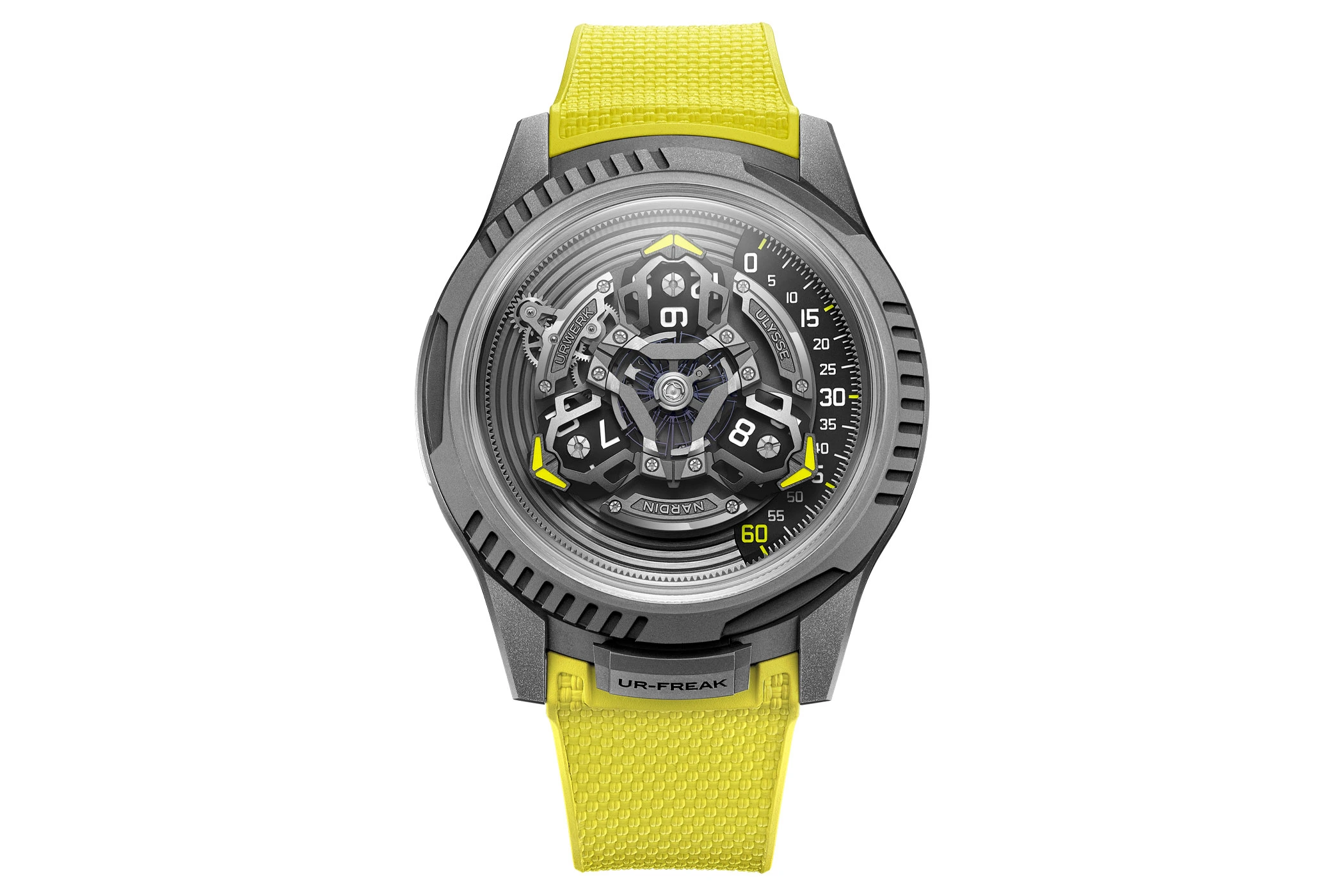

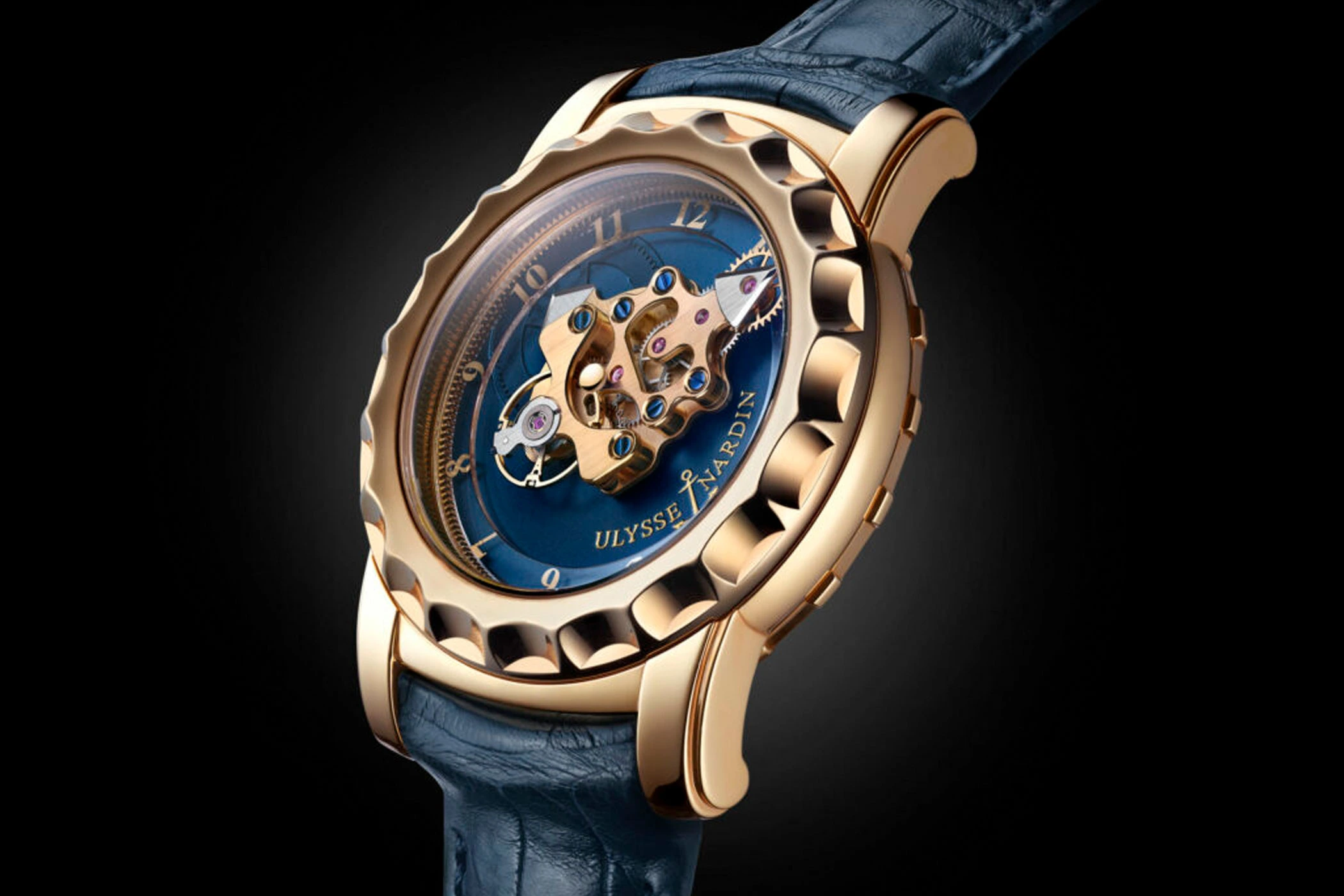
![Freak [X Crystalium] by Ulysse Nardin](https://swisswatches-magazine.com/uploads/2025/11/ulysse-nardin-freak-x-crystalium.webp)

